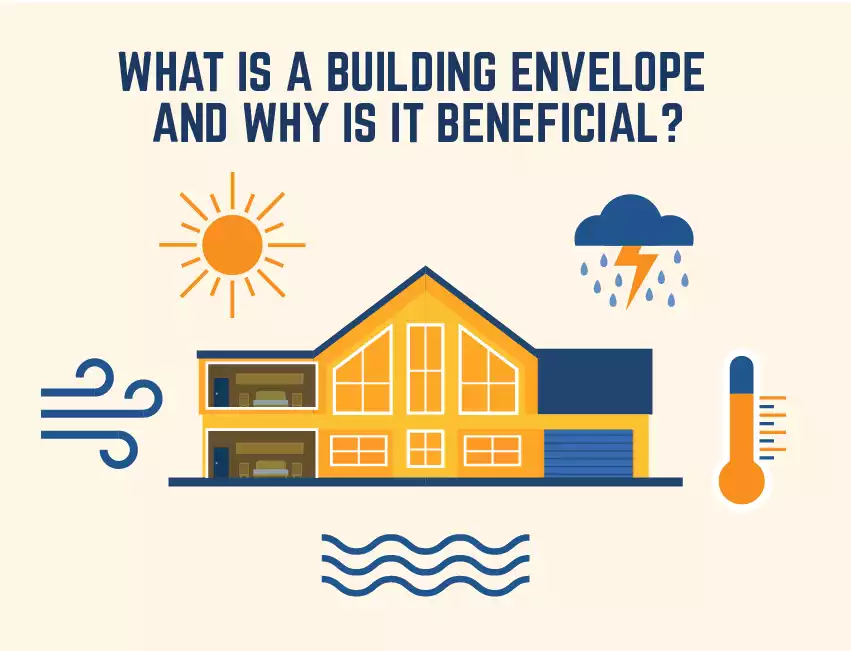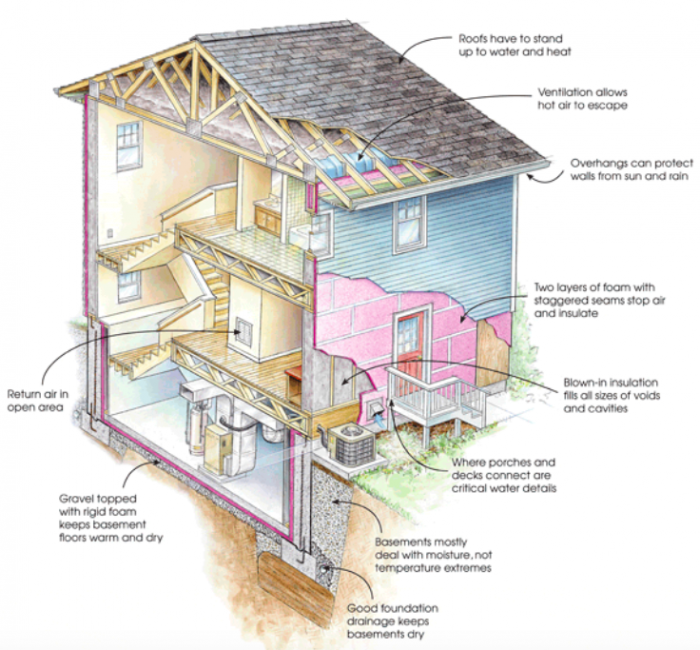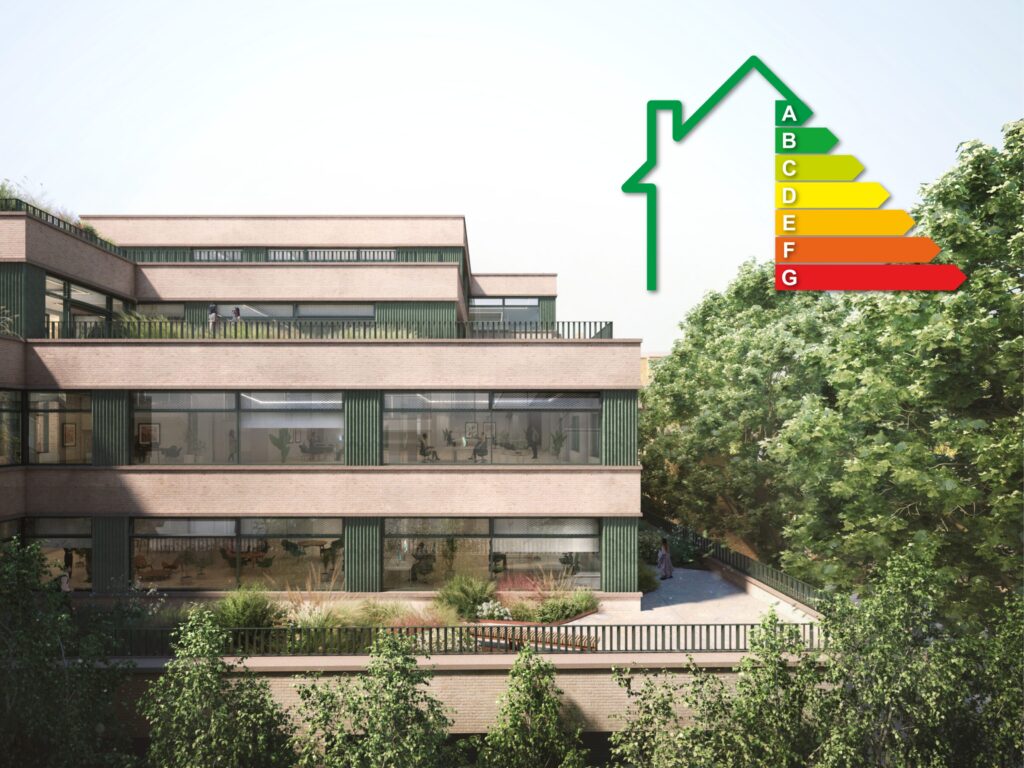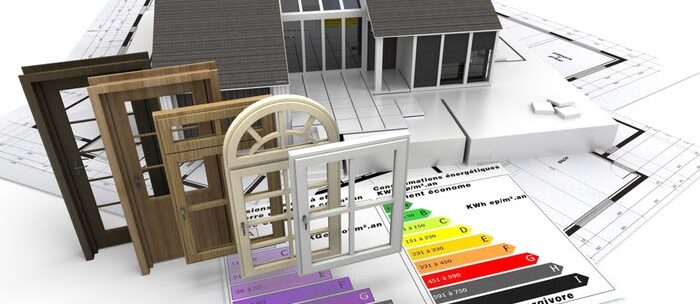Building Envelope Efficiency and Environmental Regulations in Canada
The building envelope, which includes walls, roofs, windows, doors, and insulation, plays a critical role in a structure’s energy efficiency and overall environmental performance. A well-designed and efficient building envelope minimizes heat loss, improves indoor comfort, and reduces the need for heating and cooling systems—key factors in reducing energy consumption and carbon emissions. As Canada faces increasingly stringent environmental regulations and aims to meet ambitious climate targets, building envelope efficiency has become a central focus in both new construction and renovation projects. This article explores the importance of building envelope efficiency, the relevant environmental regulations in Canada, and best practices for enhancing envelope performance.

What Is the Building Envelope?
The building envelope is the physical barrier between the interior of a building and the outside environment. It consists of several key components:
- Exterior walls: These provide structural support and protection from the elements while contributing to insulation and thermal resistance.
- Roofing: The roof acts as a shield against weather, and its insulation and materials play a vital role in controlling heat transfer.
- Windows and doors: These components provide natural light and ventilation but can also be significant sources of heat loss or gain if not properly insulated or sealed.
- Insulation: Installed in walls, roofs, and floors, insulation reduces the flow of heat into and out of the building, improving energy efficiency.
- Air barriers: These prevent the uncontrolled flow of air between the building’s interior and the outside, reducing drafts and heat loss.
A high-performance building envelope ensures that the building is well-sealed and insulated, reducing the demand on heating and cooling systems, improving indoor air quality, and contributing to sustainability goals.
Why Building Envelope Efficiency Matters
Energy consumption in buildings is a significant contributor to greenhouse gas emissions, with heating and cooling accounting for a large portion of energy use. In Canada’s cold climate, especially in northern regions, a poorly insulated or leaky building envelope can lead to significant energy losses, driving up both energy costs and emissions. Improving building envelope efficiency offers several key benefits:
- Reduced energy consumption: A well-insulated and sealed building envelope reduces the need for artificial heating and cooling, cutting energy use and associated costs.
- Improved indoor comfort: Buildings with efficient envelopes maintain more stable indoor temperatures, reducing drafts and cold spots, and providing better overall comfort for occupants.
- Lower greenhouse gas emissions: By reducing energy consumption, efficient building envelopes help lower carbon emissions, contributing to Canada’s climate action goals.
- Regulatory compliance: As building codes and energy regulations become more stringent, an efficient building envelope helps ensure compliance with federal, provincial, and municipal environmental standards.

Key Environmental Regulations Governing Building Envelope Efficiency in Canada
In Canada, a range of federal and provincial regulations governs building envelope efficiency to ensure that buildings are constructed and renovated to meet high energy performance standards. These regulations are designed to support the country’s broader efforts to reduce greenhouse gas emissions and promote sustainability in the building sector.
1. National Building Code of Canada (NBC)
The National Building Code of Canada (NBC) sets out minimum standards for the construction of buildings, including requirements for building envelope performance. The code outlines the necessary insulation levels, air tightness, and materials to be used in walls, roofs, and foundations to ensure energy efficiency.
The NBC is updated regularly to reflect advancements in building technologies and climate change mitigation strategies. Building envelopes must meet specific thermal resistance (R-value) standards to prevent heat loss and reduce energy consumption.

2. National Energy Code for Buildings (NECB)
The National Energy Code for Buildings (NECB) is a companion to the NBC, focusing specifically on energy efficiency in commercial, institutional, and high-rise residential buildings. The NECB includes detailed requirements for the thermal performance of building envelopes, including minimum insulation values, air tightness standards, and window energy performance.
The NECB also addresses the role of the building envelope in reducing energy demand for heating, cooling, and ventilation systems, making it a crucial element in ensuring that buildings meet energy efficiency targets.
3. Provincial and Territorial Building Codes
Each province and territory in Canada has the authority to adopt and modify the NBC and NECB to suit regional needs. Many provinces have introduced additional requirements for building envelope efficiency to address local climate conditions and sustainability goals.
For example:
- British Columbia’s Energy Step Code: The Energy Step Code is a performance-based standard that sets higher energy efficiency targets for new construction, including stricter requirements for building envelope performance. The Step Code encourages builders to go beyond the minimum standards in the NBC and NECB by improving insulation, reducing air leakage, and selecting high-performance windows and doors.
- Ontario Building Code: Ontario has adopted energy efficiency standards that align with the NECB but include additional requirements for residential and commercial buildings. The code focuses on building envelope improvements such as better insulation and window performance to reduce energy use in the province’s cold winters.
4. Energy Efficiency Regulations for Existing Buildings
For renovation projects, energy efficiency regulations often apply to any upgrades made to the building envelope, such as window replacements, insulation improvements, or roof upgrades. Many provinces require that renovated buildings meet the same energy performance standards as new constructions, ensuring that older buildings are brought up to modern efficiency levels.
In addition, building energy performance assessments, such as energy audits, are often required before and after major renovations to identify inefficiencies in the building envelope and determine the most effective upgrades.

Best Practices for Building Envelope Efficiency
Achieving a high-performance building envelope requires careful attention to materials, design, and construction techniques. Whether in new construction or renovation projects, the following best practices can help improve envelope efficiency and ensure compliance with environmental regulations:
1. Optimize Insulation Levels
Insulation is one of the most important components of an efficient building envelope. Proper insulation reduces heat transfer through walls, roofs, and floors, keeping indoor temperatures stable and minimizing energy use. When selecting insulation materials, it’s essential to choose products that provide a high R-value (a measure of thermal resistance) while meeting local building code requirements.
Key areas for insulation include:
- Attic and roof: Heat loss through the roof is common in poorly insulated buildings. Adding or upgrading insulation in the attic is one of the most cost-effective ways to improve energy efficiency.
- Exterior walls: Installing or upgrading insulation in exterior walls can significantly reduce heat loss, especially in colder regions.
- Foundation and basement: Insulating the foundation and basement walls prevents heat loss through the ground, improving overall envelope performance.
2. Improve Air Tightness
Air leaks around windows, doors, and building joints can significantly reduce the efficiency of the building envelope, leading to drafts and increased energy use for heating and cooling. Improving air tightness involves sealing gaps and cracks in the building’s exterior to prevent uncontrolled air leakage.
Common air sealing techniques include:
- Weatherstripping: Adding weatherstripping around doors and windows can help seal gaps and prevent drafts.
- Caulking: Caulking cracks in the building’s exterior, particularly around windows, doors, and siding, improves the envelope’s ability to retain heat.
- Air barriers: Installing continuous air barriers during construction or renovation creates a sealed layer between the interior and exterior of the building, reducing the potential for air leakage.
3. Select Energy-Efficient Windows and Doors
Windows and doors are common weak points in the building envelope, often responsible for significant heat loss. Replacing old, inefficient windows and doors with energy-efficient alternatives can dramatically improve the thermal performance of a building.
Energy-efficient windows and doors typically feature:
- Double or triple glazing: Multi-pane windows provide better insulation than single-pane windows by trapping air or inert gas between the panes, which acts as an insulating barrier.
- Low-emissivity (Low-E) coatings: Low-E coatings on windows reflect heat back into the building during winter and reduce heat gain during summer, improving energy efficiency.
- Insulated frames: Window and door frames made from materials with high insulating properties, such as vinyl or fiberglass, reduce heat transfer and improve overall envelope performance.

4. Incorporate Passive Design Elements
Passive design strategies, such as orienting buildings to maximize natural light and heat, can reduce energy consumption while improving indoor comfort. Incorporating large, south-facing windows in cold climates can capture solar heat during the winter, reducing the need for artificial heating. Shading devices, such as awnings or overhangs, can prevent overheating during summer months, lowering cooling demand.
Incentives for Improving Building Envelope Efficiency
To encourage energy-efficient building practices, the Canadian government and provincial authorities offer various incentives for improving building envelope performance. These incentives include:
- Canada Greener Homes Grant: The federal government’s Canada Greener Homes Grant provides financial support to homeowners for energy-efficient retrofits, including improvements to insulation, windows, doors, and air sealing. Homeowners can receive up to $5,000 in grants for eligible upgrades.
- Provincial Rebate Programs: Many provinces, including British Columbia and Ontario, offer rebate programs that provide incentives for upgrading building envelopes in both residential and commercial buildings. These programs often cover the cost of insulation upgrades, window replacements, and air sealing measures.
Conclusion
Building envelope efficiency is a critical factor in reducing energy consumption, improving indoor comfort, and meeting Canada’s environmental regulations. As the country works toward its climate goals, optimizing building envelopes will play a key role in achieving energy savings and reducing greenhouse gas emissions. By following best practices for insulation, air sealing, and the selection of energy-efficient materials, property owners and builders can ensure compliance with building codes while creating more sustainable, cost-effective structures. With the support of government incentives, improving the efficiency of the building envelope is an investment in the future of Canada’s built environment.
